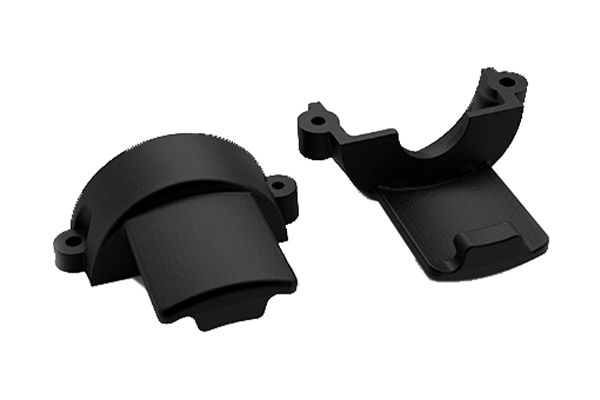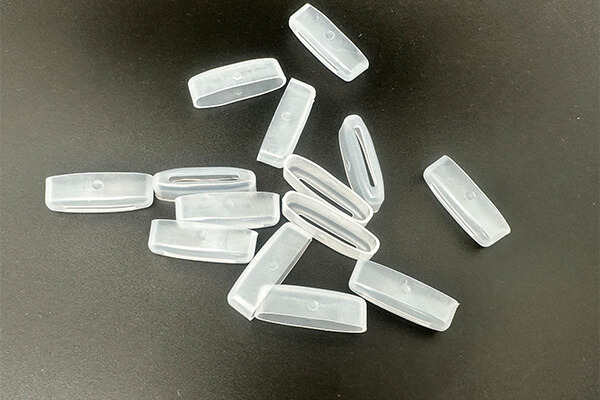Polyethylene Molding: Sungplastic’s Custom PE Part Solutions
The most widely used plastic in the world, polyethylene (PE), is made into parts through the process of polyethylene molding. The material properties of this thermoplastic polymer are partly determined by its changeable crystalline structure. Hardness and density of plastics are significantly impacted by the degree of crystallinity. Thus, characteristics like stiffness and flexibility are impacted. Polyethylene molding finds use in electrical, medicinal, and industrial products as well as packaging and pipes.
Sungplastic delves into polyethylene molding for over 20 years and can provide the most practical advice for your projects. Please ream more.

Varieties of Injection Molded Polyethylene
Injection molding commonly involves five distinct types of polyethylene molding plastic.
- Low-density polyethylene (LDPE)
- Linear-low-density polyethylene (LLDPE)
- Medium-density polyethylene (MDPE)
- High-density polyethylene (HDPE)
- Ultra-high molecular weight polyethylene (UHMWPE)
Polyethylenes with lower density, such as LDPE and LLPDPE, exhibit reduced crystallinity, resulting in increased flexibility. Conversely, higher-density polyethylenes like MDPE and HDPE possess greater crystallinity, which imparts enhanced rigidity. Crystallinity is closely linked to molecular weight, influencing material characteristics and processing parameters.
PE Properties and Polyethylene Molding Guides
Polyethylene, in general, boasts a lightweight nature, resistance to chemicals, and excellent electrical insulation properties. The degree of stiffness and strength varies among the various PE types, making injection-molded polyethylene an ideal choice for components requiring resilience to stress and strain. Designers often encounter trade-offs when selecting the appropriate polyethylene molding type, as heightened stiffness can also entail increased brittleness. Furthermore, different PE plastics offer varying degrees of resistance to specific chemicals and environmental factors like sunlight.
When contemplating the use of polyethylene in your next injection molding project, it is vital to comprehend the unique properties, advantages, disadvantages, and applications associated with each PE variant. This article delves into these aspects of polyethylene molding, but for a successful project, adhering to best practices in polyethylene molding molding is equally essential; thus, we recommend consulting our Injection Molding Design Guide.
Polyethylene Molding Considerations
In addition to comprehending material attributes and adhering to polyethylene molding guidelines, it is beneficial to grasp the four critical processing parameters that must be controlled by injection molders:
- Melt temperature
- Mold temperature
- Injection speed
- Injection pressure
While designers are not responsible for manipulating these processing variables, skilled injection molders prioritize their precise regulation.
Melt temperature denotes the temperature of the polymer as it emerges from the nozzle and enters the mold. This parameter significantly influences viscosity, representing the material’s resistance to flow. Additionally, it impacts molecular weight, which governs a plastic’s stretchability before rupturing. Melt temperature can vary significantly depending on the type of polyethylene in use.
In the case of semi-crystalline materials like PE plastic, mold temperature plays a pivotal role in determining polymer crystallinity. This is due to the fact that crystalline structures form at temperatures below a polymer’s melting point but above its glass transition (Tg) temperature. The mold temperature for polyethylene molding can also exhibit notable variations, contingent on the specific type of PE plastic being processed.
For injection molders, setting the injection speed to achieve rapid mold filling and configuring the injection pressure to a relatively high level are of paramount importance. Given the disparities among polyethylene types, designers may require assistance in comparing the material properties of LDPE, LLDPE, MDPE, HDPE, and UHMWPE plastics. The following sections provide essential insights for designers.
LDPE Injection Molding
Low-density polyethylene (LDPE) maintains its flexibility even at low temperatures and offers a favorable strength-to-density ratio. It can endure substantial stretching before breaking, displaying odorless, sterile, and watertight properties. LDPE also retains its structural integrity and exhibits low water absorption. Applications for injection-molded LDPE include water supply hose fittings.
However, LDPE is susceptible to stress cracking, and its strength and stiffness are relatively lower compared to other polyethylene types. While LDPE demonstrates good resistance to alcohols, dilute alkalis, and acids, its resistance to mineral oils, oxidizing agents, and specific hydrocarbons is limited. Moreover, LDPE is highly flammable and exhibits poor resistance to ultraviolet (UV) light, rendering it unsuitable for outdoor applications.
Nevertheless, with the incorporation of certain additives, LDPE can attain UV resistance and serve as an anti-static barrier for sensitive electronic components. Importantly, LDPE is relatively straightforward to process during plastic injection molding. It has a melt temperature ranging from 160°C to 260°C and experiences post-mold shrinkage between 1.5% and 3.5%.
LLDPE Injection Molding
Linear-low-density polyethylene (LLDPE) offers both flexibility and resilience, along with puncture and impact resistance. Compared to LDPE, injection-molded LLDPE exhibits superior chemical resistance, enhanced mechanical properties across a wide temperature range, a glossy surface finish, and resilience against cracking. This type of PE plastic provides effective water resistance.
LLDPE shares structural similarities with HDPE but boasts a higher softening point, increased strength, and greater elongation at break. It is, however, more challenging to process than LDPE and features a narrower temperature range for heat sealing, commonly employed in packaging and industrial laboratory applications. Injection-molded LLDPE finds use in enclosures, caps, snap fits, and lids.
MDPE Injection Molding and HDPE Injection Molding
Medium-density polyethylene (MDPE) is distinguished by its durability, high impact resistance, and commendable chemical resilience. It exhibits robust resistance to shocks, drops, and various chemicals, including diesel fuels, acids, and oils. MDPE offers greater stiffness compared to LDPE and LLDPE, albeit less than HDPE, positioning it as an intermediate option. However, MDPE fares poorly against UV light and solvents.
High-density polyethylene (HDPE) is characterized by its higher crystallinity, which imparts rigidity while maintaining a degree of flexibility. In comparison to other polyethylene variations, HDPE boasts superior tensile strength. This cost-effective polymer offers favorable processability and combines excellent electrical insulating properties with low water absorption. Nonetheless, HDPE is plagued by significant mold shrinkage, primarily occurring during the cooling phase. This shrinkage can influence dimensional stability and part tolerances, occasionally leading to warping—an common issue with molded parts. HDPE is also susceptible to stress cracking, UV resistance issues, and limited heat resistance. Some HDPE grades are engineered to address specific performance needs, such as resistance to sunlight.
In plastic injection molding, HDPE features a melt temperature range spanning from 200°C to 300°C, while mold temperature typically falls within the range of 10°C to 80°C. Elevating the mold temperature can enhance the appearance of the final HDPE part, yielding a shinier, glossier surface. Mold shrinkage for HDPE varies between 1.5% and 4%, contingent on processing conditions and the component’s thickness.

UHMWPE Injection Molding
Ultra-high molecular weight polyethylene (UHMWPE) showcases outstanding mechanical properties, including high abrasion resistance and exceptional impact strength. Its low coefficient of friction contributes to impressive wear resistance and abrasion resistance. Medical applications for UHMWPE include joint replacements in procedures like hip, knee, ankle, and shoulder surgery.
Due to its remarkable inertness, UHMWPE can be employed in corrosive or aggressive environments at moderate temperatures. It exhibits resistance to several solvents at elevated temperatures, albeit with some exceptions, such as aromatic and halogenated hydrocarbons. The specific UHMWPE grade determines its resistance to wear, chemicals, and impact.
In plastic injection molding, molecular weight assumes significance not only due to its relation to crystallinity but also its influence on a thermoplastic’s melt rheology. Resins with higher molecular weight, such as UHMWPE, exhibit elevated viscosity and experience a more substantial pressure drop within the injection mold cavity during filling. Consequently, a higher packing pressure is necessary to compensate for this pressure drop, preventing shrinkage in the final part.
Choose Sungplastic for Polyethylene Molding
Polyethylene molding offers many advantages and is a versatile manufacturing process. However, it must be acknowledged that while having these advantages, it also brings certain challenges in terms of material selection, part design and processing.
Our team of injection molding experts are well-versed in the different properties of LDPE, LLDPE, MDPE, HDPE and UHMWPE plastics. We understand the nuances of these material properties, ensuring we can make informed recommendations on material selection. We know how to optimize part designs to take advantage of the specific strengths of LDPE, LLDPE, MDPE, HDPE or UHMWPE while mitigating their weaknesses.
Ready to get started? Contact us!
Get a free quote and design analysis today.
We’ll reply to you within 6 working hours.
We respect your privacy.
+86 139 2927 4777 (WhatsApp, Wechat)
